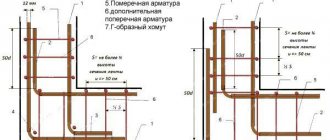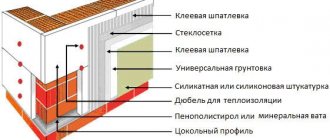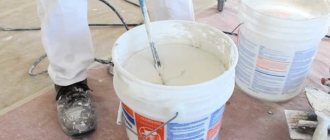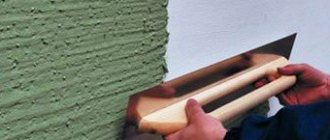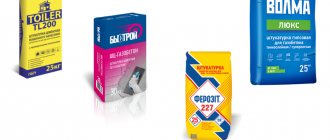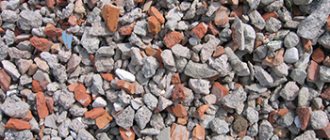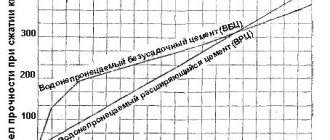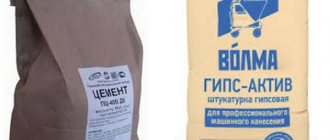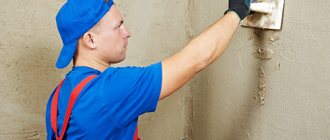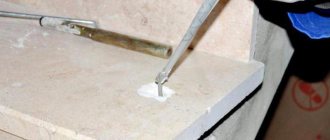Plastering and puttying are some of the most common terms used in the construction process. It is sometimes difficult for an ignorant customer to find differences in these processes, because they look almost the same and are used for finishing walls and ceilings. Both compositions are construction mixtures for leveling surfaces. However, putty and plaster, despite their external similarity, are two completely different materials. In order to avoid getting into trouble and understand the nuances of the repair process, you should be clearly aware of the differences in the purpose and use of these solutions.
Plaster
This type of mixture is a building composition designed to level the surface in case of large defects, blockages, or unevenness. In addition, plastering is carried out for the purpose of additional thermal insulation. Plastering walls is a rough finish. In professional construction companies, this is done by specialist plasterers.
Features of plaster mixtures
The composition of the plaster compound includes sand, cement and polymer elements, which give the solution plasticity and promote better adhesion. There are different types of plaster mortars: cement, gypsum, lime, etc. The plastering mixture has a coarse grainy texture and can be applied in a thick layer.
Choosing the best putties
Plasterboard putty for painting and wallpaper
And of course, when we have figured out the correct pronunciation and spelling of the term and action, we can talk about which mixture is better. And we will start with these putties:
- Gypsum and polymer – gypsum-based putty is used for interior finishing of plasterboard and cement surfaces. Gypsum putty helps to get rid of irregularities and cover joints, thanks to it the surface becomes smooth and even. Putties are also used for decorative work - finishing rocks and columns, for example. Polymer putty, which contains a plasticizer and polymers, is used in rooms with a small percentage of moisture. Its peculiarity is that it hardens quickly after application to the surface. If polymer putty is used in a room with a high level of humidity, it can disrupt the microclimate and contribute to moisture retention, but gypsum-based solutions maintain the correct percentage of humidity. Polymer is also less vapor-permeable and not as plastic as gypsum-based plaster, and it is also much more expensive. Therefore, which one is better, polymer or gypsum, is up to you, because it all depends on the task at hand
Related article: DIY bed frame (photo and video)
Putty knife
- Latex or Acrylic Putty – Professionals love latex putty because of its superior performance characteristics. Hardener and polymers protect finished surfaces from moisture. The latex mixture can be applied even in a very thin layer without losing its properties and strength, and a wide range of color palettes makes it more in demand. Acrylic putty is used in both exterior and interior work, but more as a finishing touch to perfection. It is better to make the layer thicker, otherwise the strength will be reduced to a minimum, but thanks to it you can achieve a mirror effect of the finished surface. The acrylic mixture is not afraid of moisture and whether it is better or worse than latex also depends on where the solution will be used and what its purpose is. You can even find acrylic latex putty, which contains silicone
Wall putty
- Silicate plaster is used to level brick, concrete or plastered surfaces and can be used both outside and inside the house. This process is a preparation for painting with silicate paint. Silicate putty has good adhesion, resistance to moisture, and resistance to sudden temperature changes. And on top of this, it is also environmentally friendly. If you choose silicate putty, it is better to use the Terakko brand - it is sold ready-made and is suitable for interior work. It is easy to fill cracks and joints with it, because its plus is its elasticity. This elasticity creates a durable surface that can withstand various loads. By the way, if you decide to do the work yourself, then you can prepare the putty yourself, just choose the right components.
Putty
This mortar is also used to level surfaces. However, they cannot remove large irregularities and blockages. Puttying is a finishing touch. In construction companies, such work is usually performed by painters. It is the putty that prepares the walls for subsequent painting and decoration. Small unevenness, minor defects, cracks in walls and ceilings are puttied.
Features of putty
There are several types of putty mixtures designed for different types of finishing. Accordingly, the additives in such solutions vary. You can distinguish cement, gypsum, acrylic, oil and adhesive. The texture of putty materials is fine-grained and smooth. In addition to the main ingredients, the composition includes polymer substances that impart elasticity.
Why did two terms appear?
Putty is used for preliminary puttying of surfaces (starting) and for finishing work (finishing)
I don’t want to go back to the times of the Roman Empire, because that’s when this term appeared, but I’ll say right away that we should start from the derivative. What in the whole process and terminology does not raise questions for us? – That’s right, the tool used to apply plaster, putty and putty is a spatula. It is this that causes the action, putty, which means that it would be correct to say putty, but the explanatory dictionary also recognizes the word putty.
Interesting! If you delve into the study of dictionaries, you can see that Dahl’s main term was the word “putty,” but putty and putty were synonyms for this action. But in Ozhegov’s dictionary the word “shpadlevat” is no longer there, but other options are present, so it’s up to you to decide how to write and say it correctly.
Wall putty for wallpaper
For example, puttying is closer to me, but in documentation it is still correct to use the first option, but in colloquial speech this is no longer important. By the way, you have already noticed that putty is not only a type of finishing material, but also the very action of applying it to the surface!
Related article: How to make chipboard shelves with your own hands
The putty is designed to seal cracks, level individual areas, and create a perfectly flat surface.
But now you can return to construction and understand what is the difference between puttying and plastering? So:
- Plaster is a mixture where the filler is large mineral fractions. If the mortar is cement, then it is coarse sand. And if gypsum plaster is used, then it is alabaster grinding
- There is also a difference in areas of use - plaster can correct large surface defects, but putty is suitable for finishing. For example, I was preparing the walls for painting, and first I removed all the holes and differences with plaster, and then puttying helped get rid of minor defects, pores and chips
- And the most important difference between them is the layer of applied material. If the putty layer does not exceed 5 mm, then the plaster solution can be applied 5-7 cm thick - you must agree, it’s impressive. By the way, if the layer of plaster is large enough, then it is necessary to reinforce the surface with steel or fiberglass mesh
We putty the walls
Now it becomes clear why the same action has two names. And in fact, everything is very simple - the size of the grain with which they are filled is the main factor. Let's look from the practical side:
- The price of plaster of a certain volume is always less than the cost of putty - this is due to larger fractions, which are cheaper
- The plaster mixture is more durable
- The solution is laid in a layer much thicker than the putty layer.
Interchangeability
The described types of building materials differ not only in purpose and texture, but also in application technology. Thus, it is impossible to replace plastering with putty, and vice versa. The exception is situations when decorative plaster is used in the process of external repairs or if the surface does not have distortions or curvature, which allows you to immediately apply putty, without prior plastering.
So, putty and plaster have different compositions and properties. They are used for various purposes during leveling and finishing walls, ceilings and other surfaces. You cannot replace one process with another. You should clearly understand these differences before starting work.
Characteristics of gypsum putty
Gypsum putty assumes a consumption per square meter of within 1.2 kilograms. This indicator is correct for a layer thickness of 1 millimeter. Adhesion to the substrate is excellent, as indicated by a figure equivalent to 0.6 MPa. A limited amount of the composition should be prepared for application, this is due to the fact that the “working capacity” of the solution is 60 minutes. Complete drying time is 5 hours. Work is allowed to be carried out in a temperature range from +5 to +30 degrees. A surface that has been finished with gypsum putty can be used when the thermometer mark is between +5 and +50 degrees.
Sequence of applying plaster and putty
How is plaster and putty applied to walls? What is the difference and what is the sequence of operations? The step-by-step procedure is the same for both plaster and putty, but whether all materials are worth using depends on the quality of the leveled surface:
- Curved or wavy surfaces with height differences ≥ 5 mm require: first cleaning and applying a primer, then applying a layer of plaster, and lastly, again priming and laying a layer of putty;
- Curved or wavy surfaces with height differences ≤ 5 mm require: all previous steps except plastering. That is: stripping, priming, puttying, priming again, and laying the finishing putty mixture;
- A primer is simply applied to a smooth plastered surface, after which the wall is puttied with a finishing mixture.
Sequence of wall repairs
Even an externally ideal wall may have flaws - internal peelings or cracks. Therefore, before repairing, it is recommended to tap the wall to detect these layers and areas and get rid of them. If you leave such areas without repair, after a while you will get new problems on the new flat surface - the plaster will swell and begin to flake off, falling off in pieces.
Often home craftsmen say: “why spend money on a primer,” limiting themselves, at best, to wetting the wall with water. And it’s completely in vain - it is strictly forbidden to exclude primer from construction and repair operations. A deep penetration primer solution allows you to increase the adhesion (adhesion) of surfaces many times, ensuring the strength of all layers, including old layers of plaster.
Yes, even simply moistening the wall without priming will make the final result better, but the effect of the primer will not replace it, especially if plaster or putty is applied to surfaces made of other materials. For example, simple moisturizing will not help when plastering a wooden wall - the mortar will fall off over time, but after priming it will not.
Priming walls before plastering and puttying
